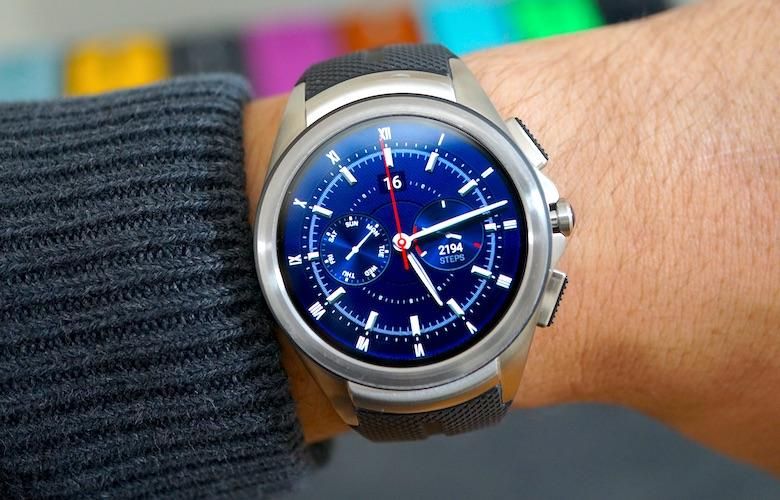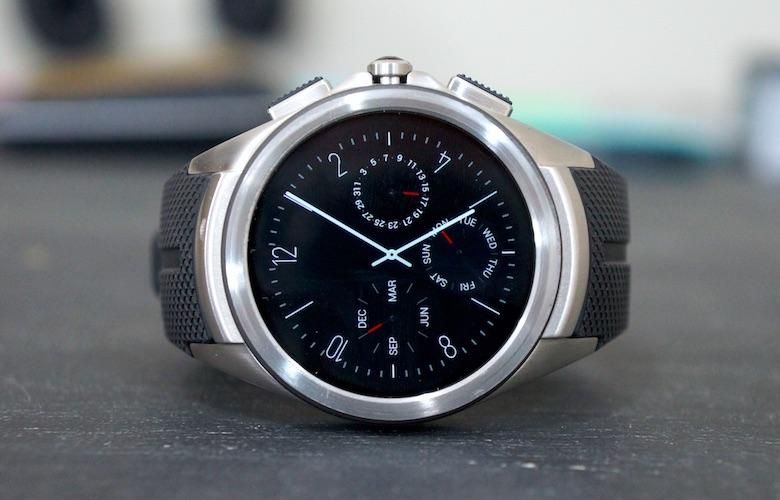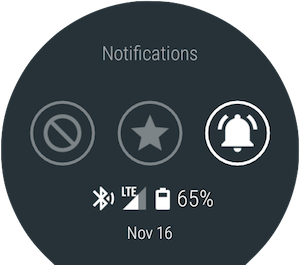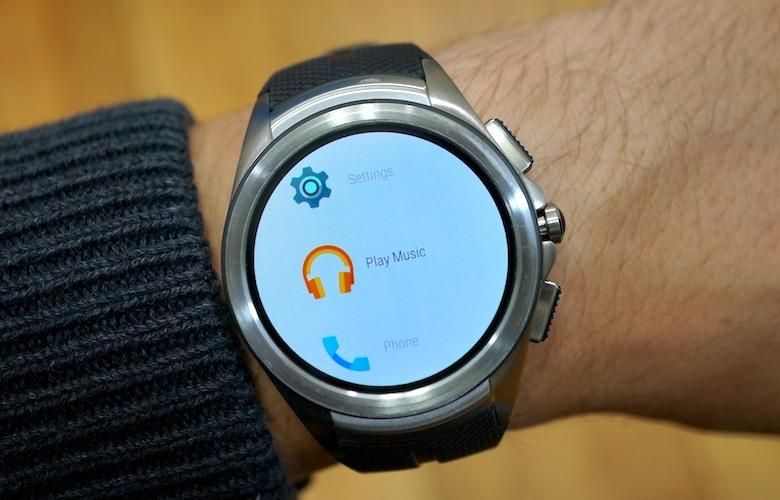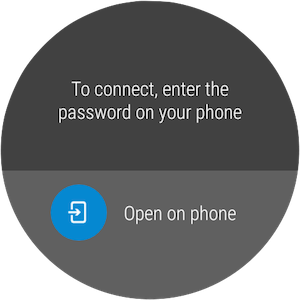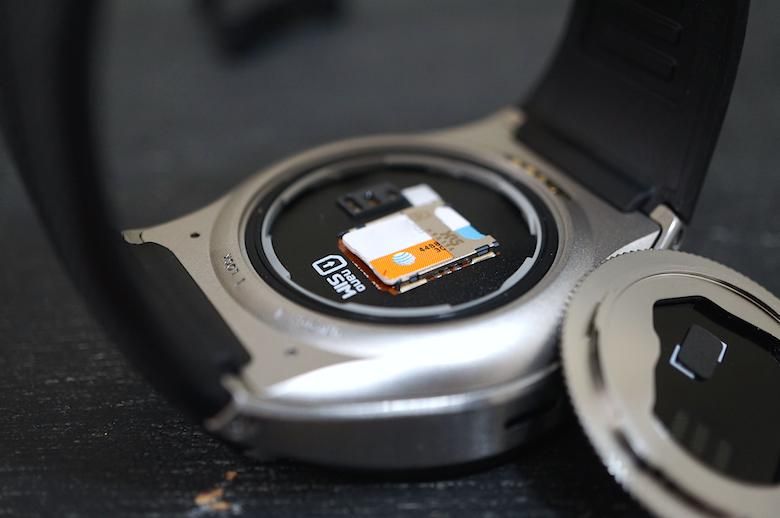As I write this, I’m seated at a local cafe with only my smartwatch to keep me connected. And so far, I’m not really sure what to think.
I received my LG Watch Urbane 2nd Edition LTE on Friday night, and since then I’ve been using it with a BlackBerry Priv. In many ways, the Watch Urbane 2nd Edition LTE (which I’m just going to start calling the “Urbane 2” because c’mon with these ridiculous brand names) is a typical Android Wear watch on steroids. It’s got a big beefy case and a super high-resolution display; it packs 50% more RAM than most of its competition; and it brings a bigger battery to boot. When paired with an Android phone over Bluetooth, it does everything an Android Wear watch should do: it delivers notifications via vibrating alerts, lets you control certain phone features remotely, and it tracks your fitness level through built-in sensors. And by and large it’s been a solid companion when it comes to these fundamentals.
Where the Urbane 2 differs is in its use case. While it’s still technically a smartphone accessory, it’s built to operate independently of a smartphone where necessary. It does this by means of a speaker/microphone combination, a nanoSIM-powered cellular radio and a new version of Android Wear, which together render it a fully-fledged smartphone. Though we’ve seen similar devices before, the Urbane 2 is the first standalone smartwatch to run on Google’s wearable platform. The result is a watch that feels at once super-futuristic and frustratingly limiting. Here’s some first impressions on the way to the full review.
LG really knows its smartwatches
In the smartphone space, LG’s efforts are pretty inconsistent. The groundbreaking industrial design of devices like the G Flex 2 and the powerful hardware of phones like the V10 are often undercut by the company’s lackluster custom software, with the result being a middling experience. On watches, though, LG is killing it. From its bare-bones initial G Watch the company rapidly expanded to round displays with the rugged G Watch R and the classy-if-chunky Watch Urbane, both of which featured solid battery life and some of the best displays available on a smartwatch. The Watch Urbane LTE got a lot of press for its use of the seemingly-immortal webOS, but it served a more important purpose in its sole launch market of South Korea: it gave LG a chance to test-drive its cellular smartwatch chops.
The result is the LG Watch Urbane 2nd Edition LTE, a hybrid of both flavors of the previous-generation Urbane. While still a monster of a wearable, the Urbane LTE smoothens some of its predecessors’ rougher edges. It cleverly hides its 14mm thickness by means of a blended stainless steel body and a TPSiV rubber band, both tightly curved so the device closely hugs the wrist. The new side buttons are chunky but they blend nicely with the rest of the aggressive industrial design, the 1.38″ round P-OLED display packing a very high resolution of 348ppi. That display is protected by Gorilla Glass 3, the whole watch rated to IP67 for water and dust resistance, and the battery within is a beefy 570 mAh pack. I’ve had occasion to test all of those corners of the experience over the weekend and I’ve come away impressed: the screen holds up well to accidental doorknob-bashes; the watch seems unfazed by immersion during dishwashing; and it almost always closes out the day with 50% or more battery remaining. While its integrated watchbands mean it’s not as customizable or as stylish as some other smartwatches, it’s still a very impressive wearable that outclasses much of the Android Wear competition.
Android Wear still needs some work
Paradoxically, my biggest problem with the Urbane 2 is the same thing that gives it its power: the Android Wear software. I’ve been using Google’s wearable platform since it debuted, so I’m used to its ups and downs – and sadly, the introduction of cellular support has done little to smooth over the latter.
Don’t get me wrong: Android Wear has some really awesome high points. The ecosystem that’s sprung up around it has provided endless entertainment in the form of watchfaces, which bring impressive utility and beauty to watches like these. The interface, a scrolling list of context-sensitive cards, is simple enough to master in minutes. Having most of the power of “Ok Google” voice searches from a wrist comes in handy more often than you’d think, whether you’re doing a web search for photos of Pluto or telling your watch to remind you to change the laundry. And having instant access to your pedometer info right alongside your most recent emails and the weekly weather forecase, all via a tiny screen on your wrist, is almost intoxicating from a tech-lover’s perspective.
But despite Google’s recent update that flipped the switch on cellular compatibility, Android Wear is still incredibly dependent upon a connected smartphone. On my walk to the cafe I successfully paired a Moto Pulse bluetooth headset to the watch, but couldn’t play any music as I had none stored locally (Android Wear doesn’t offer any standalone streaming apps). When I called a colleague, I was dismayed to find that the call was routed through the watch’s onboard speaker rather than sent to the headset as I expected.
Upon arriving at the cafe, I switched the Urbane 2 over to WiFi to take advantage of the establishment’s WLAN – only to find that it was impossible to input the network password on the watch; instead it prompted me to do so on my (absent) phone. So I stuck with AT&T’s network connection, which fortunately was plenty strong. While text messages came through just fine on my watch –forwarded from Google Voice just like any other review device– emails didn’t. Android Wear seems to require a connected smartphone even for native Gmail delivery. And as with most things Android Wear, the data connection was flaky; at one point I couldn’t do anything on the watch that required a network connection until I restarted it.
A bumpy road for the price
I’ve said before that I find the majority of Android Wear watches to be significantly overpriced. With devices like the ASUS ZenWatch 2 showing what’s possible for a mere $129, it’s tough to justify coughing up $299 for a Moto 360 or $349 for a Huawei Watch. The LG Watch Urbane 2nd Edition LTE is in the same boat: in the US, it goes for between $299 and $499 depending on which carrier you buy it from.
For early adopters, who usually have few compunctions about shelling out big bucks for the latest tech, that’s probably no surprise. Indeed, AT&T’s $299 pricing actually seems quite competitive, given that you’re paying the same as you would for a 2015 Moto 360 and getting cellular connectivity, a bigger battery and a better screen. And given a few more weeks’ worth of testing, we may come to find the Urbane 2 a solid buy even at Verizon Wireless’s stratospheric price.
As of now, though, I’m not sure who the LG Watch Urbane 2nd Edition LTE is for. Smartwatches have been on the market for over five years now, and they’ve recently enjoyed a lot of mainstream exposure thanks to devices like the Pebble and the Apple Watch. As such, most people are now aware that smartwatches usually need to be connected to a smartphone to function properly, and a good chunk of people who’ve bought them seem to be okay with that. While the addition of cellular connectivity absolutely brings added benefits, they’re marginal ones given Android Wear’s limitations. It’s unclear at this point whether they’re worth the added cost in complexity and recurring monthly charges a watch like this carries; that’s the question we’ll try to answer in our full review, coming in the weeks ahead.
•
Be sure to let us know what questions you want answered in that full review! Leave a comment below and check out the most recent episode of the Pocketnow Weekly podcast for some off-the-cuff impressions of our review device. Then treat yourself to a look at a different kind of wearable with our HTC Re Vive first impressions!

